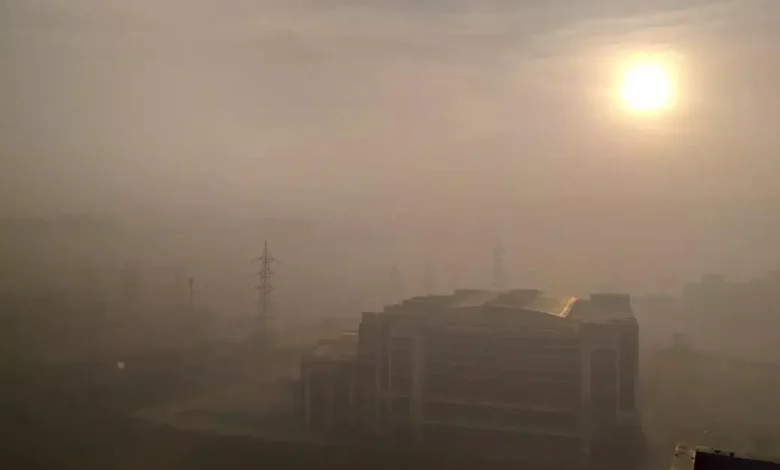Daily Current Affairs for UPSC
Impact of La Nina on air quality in India
Syllabus- Geography [GS Paper-1]

Context- It is recently observed that an unprecedented triple-dip La-Nina event, extended by climate change, has impacted the air quality in India.
How is pollution interlinked with the winter months in India?
- During October to January, northern Indian cities experience very excessive concentrations of PM2.5.
- A type of meteorological factors — temperature, moisture, heaviness in air, wind speed and direction — play a role in trapping pollution within the lower levels of the atmosphere.
- These factors also are chargeable for transporting pollution from other areas, specially the ones generated by agriculture waste burning in Punjab and Haryana, to Delhi and adjacent areas.
- On the other hand Western and Southern components of the united states of america have continually had incredibly lower levels of pollutants, due to their proximity to oceans.
Rare ‘triple dip’ La Niña
- The winter of 2022-23 coincided with the ultimate section of an uncommon triple-dip La Niña event, the first in the 21st century.
- The air quality worsened in peninsular Indian cities in the 2022-23 winter season but improved in the northern part of India.
- This phenomenon, encouraged by using climate trade, impacted the big-scale wind pattern, playing a decisive function in preventing stagnation situations in north Indian cities and hence improving air quality.
El Niño, La Niña & ENSO
-
-
- El Niño is the warming of seawater in the central-east Equatorial Pacific that occurs every few years.
- During El Niño, surface temperatures in the equatorial Pacific rise, and trade winds — east-west winds that blow near the Equator — weaken.
- El Niño causes dry, warm winters within the Northern U.S. And Canada and increases the risk of flooding in the U.S. Gulf coast and southeastern U.S. It additionally brings drought to Indonesia and Australia.
- In India, it causes weak rainfall and more heat.
-
- La Niña
-
-
- La Niña is the opposite of El Niño. La Niña witnesses cooler than average sea surface temperature (SST) in the equatorial Pacific region.
- Trade winds are more potent than common, pushing warmer water in the direction of Asia.
- This leads to drier situations in the Southern U.S., and heavy rainfall in Canada. It has additionally been associated with heavy floods in Australia.
- In India, La Niña intensifies rainfall particularly in its northwest.
-
-
- The combination of El Niño, La Niña, and the neutral state between the two contrary results is referred to as ENSO.
- Southern oscillations are large-scale changes in sea level pressure in the tropical Pacific region.
Wind direction
- A trade within the ordinary wind direction brought about the paradox of wintry weather 2022.
- During this time, wind commonly blows within the northwesterly direction, from Punjab closer to Delhi and further into the Gangetic plains.
- In the wintry weather of 2022, however, the wind flow was in the north-south direction.
- The pollution being carried from Punjab and Haryana bypassed Delhi and surrounding regions and flew over Rajasthan and Gujarat to southern regions.
- In the case of Mumbai, usually wind currents exchange between blowing from the land to the ocean every few days. When blowing from the land towards the sea, the winds carry pollutants out of the city.
- In 2022, however, in place of changing direction every four to 5 days, the winds continued in a single direction for more than a week or 10 days, leading to more accumulation of pollutants in Mumbai.
Source: The Indian Express
Practice Question:
Q.Discuss the impact of El Nino and La Nina on global weather patterns, and how do they affect the air quality of Indian cities? (150 words)





.png)



